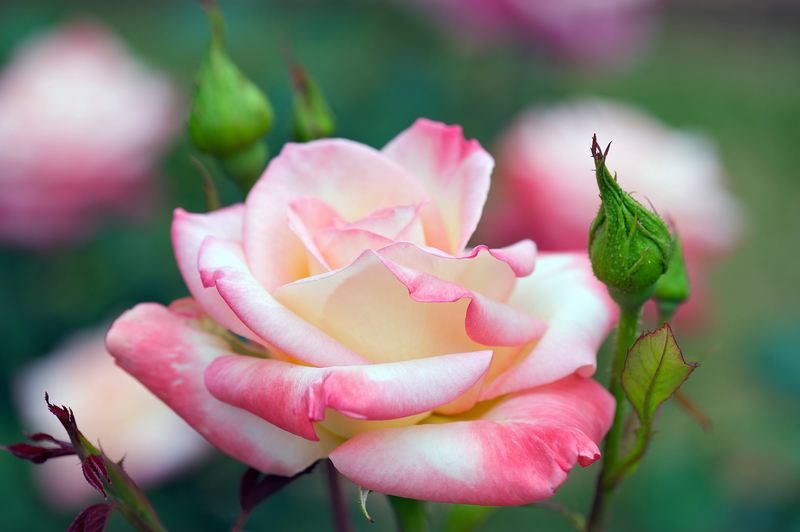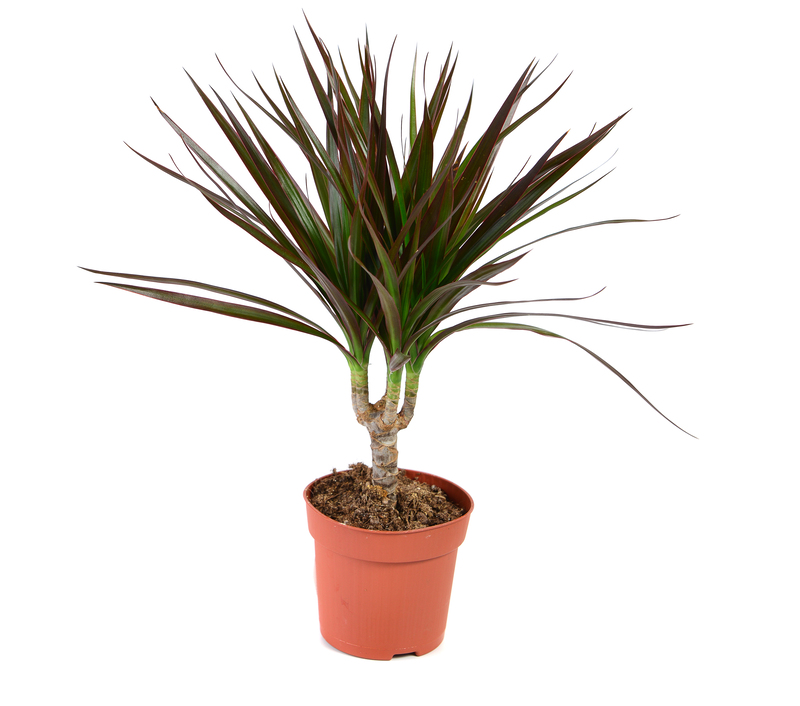Guarding Your Garden's Bloom During Winter Months
Posted on 24/05/2025
Guarding Your Garden's Bloom During Winter Months: Essential Tips to Protect Your Plants
A thriving garden is a joy during spring and summer, overflowing with vibrant flowers and flourishing plants. Yet, as temperatures drop, many gardeners worry about their garden's bloom during the chilly winter months. Guarding your garden's bloom during winter months--while challenging--is entirely possible with the right approach.
Why Winter Protection Matters for Your Garden's Blooms
Winter can be harsh on plants, especially those that are not frost-tolerant. Protective measures are crucial for preserving the beauty and longevity of your winter garden's bloom. Cold weather brings risks such as frost damage, desiccation (extreme drying), root diseases, and broken stems due to snow or ice.
By learning effective techniques for guarding your garden's blooms during the winter season, you can ensure your plants re-emerge healthy and vibrant when spring arrives.

Understanding What Needs Protection in Your Garden
Not all plants require the same level of winter care. Recognizing which plants are vulnerable will help you protect garden blooms in winter effectively.
Identifying Vulnerable Plants
- Tender Perennials: Species that cannot withstand cold temperatures--such as dahlias, cannas, and some roses--need special attention.
- Newly Planted Shrubs and Trees: Their roots are still developing, making them more susceptible to frost.
- Exotic or Non-Native Species: Plants not adapted to local winter climates usually need extra protection.
- Plants in Exposed Locations: Windy or open areas amplify the effects of winter weather.
Resilient Winter Blooms: Highlights
- Hellebores: Also known as Christmas roses, thrive in cold and add color to bleak landscapes.
- Snowdrops: These delicate blooms often push through snow, heralding the end of winter.
- Witch Hazel: Produces fragrant yellow to red-orange blooms on bare branches in winter.
Winter Threats to Your Garden
- Frost and Freeze: Low temperatures can damage leaves, stems, and roots, resulting in lost blooms.
- Snow and Ice: Heavy snow may break branches and compact soil, impeding plant growth come spring.
- Cold Wind: Wind can rob soil and air of moisture, drying out plants even in wet conditions.
- Fluctuating Temperatures: Freeze-thaw cycles may injure roots or cause "heaving," pushing young plants out of the soil.
Preparing Your Garden for Winter: Key Strategies
1. Mulching for Insulation and Moisture Retention
One of the best tools for guarding your garden's flowers during winter months is mulch. Applying a thick layer of organic mulch (such as straw, shredded bark, or compost) over the soil provides insulation and protects plant roots from freezing.
- Depth: Apply 2-4 inches of mulch around root zones.
- Timing: Wait until the ground begins to harden, so you don't trap heat-loving pests or promote disease.
- Benefits: Mulch helps moderate temperature fluctuations and locks in precious soil moisture.
2. Proper Watering Techniques Before Winter
Before your region's first freeze, give your garden a thorough watering. Moist soil retains heat better than dry and helps prevent desiccation. However, avoid watering during freeze as it can damage plant cells.
- Deep Soak: Water deeply to encourage strong root growth.
- Frequency: Water less frequently but more intensely than during hotter months.
3. Shielding with Cloches, Covers, and Row Tunnels
Protective barriers are essential for shielding tender blooms from frost, biting wind, and snow.
- Cloche: An individual plant cover, usually glass or plastic, perfect for covering young or delicate flowers.
- Row Tunnels: Hoop-and-plastic structures ideal for sheltering a row or bed of plants.
- Frost Blankets: Lightweight fabric covers provide extra warmth and are easy to set up on cold nights.
Remove covers during warm days to let plants breathe and avoid overheating.
Special Care for Container Gardens in Winter
Why Potted Plants Are Vulnerable
Plants in containers are less insulated than those in the ground. As such, guarding your garden's potted blooms throughout winter is especially important.
- Move Indoors: Transplant tender perennials or annuals into pots and bring them inside before the first hard frost.
- Group Together: If moving inside isn't possible, cluster pots together near a south-facing wall for heat and wind protection.
- Wrap Containers: Use burlap, bubble wrap, or hessian to cocoon pots, minimizing temperature swings.
Drainage is critical during winter; soggy soil freezes faster and harms roots.
Pruning and Cleaning: Setting Up for Success
Fall is the perfect time to prepare your garden for winter. Thoughtful cleaning and pruning will give your blooms the best chance to survive the cold.
Tips for Pruning
- Remove Dead and Diseased Growth: Prevent the spread of pests and diseases by cutting away problem areas.
- Trim Only Where Needed: Over-pruning can stimulate fresh, tender growth that falters in cold weather.
- Delay Full Pruning: For many plants, including some roses, it's better to wait until spring for major shaping.
Garden Cleanup Checklist
- Clear away fallen leaves and debris to avoid fungal disease.
- Pull and dispose of spent annuals and vegetables.
- Inspect stored bulbs or tubers for rot or mold.
Winterizing Your Lawn and Trees
Lawn Protection in Winter
- Keep Grass Short: Mow one last time before winter, but avoid scalping the lawn.
- Rake Regularly: Leaves left on grass can smother and weaken it by spring.
- Limit Traffic: Walking over frozen or soggy grass damages roots and compresses soil.
Tree and Shrub Care
- Mulch Bases: Insulate tree roots with a ring of mulch several feet across.
- Wrap Trunks: Young or thin-barked trees are prone to "sunscald" and cracking; protect trunks with tree wrap.
- Prune Damaged Branches: Remove weak or overhanging branches to prevent breakage from snow or ice.
Encouraging Blooms in Winter: Best Practices
Winter doesn't mean a colorless garden. Careful plant selection and protection will ensure you enjoy some winter garden blooms.
Choosing Winter-Blooming Plants
- Camellias: Provide stunning blossoms in late winter.
- Winter Jasmine: Delicate yellow flowers bloom on bare stems.
- Mahonia: Tall spikes of fragrant yellow blooms in cold temperatures.
- Early Irises: Many varieties burst into color in the earliest thaws.
Planting now for next winter? Choose species known for cold-hardiness in your specific hardiness zone.
Fertilizing During the Cold
- Avoid Heavy Feeding: Most plants enter dormancy during cold months and require less nutrition.
- Use Slow-Release Fertilizer: If you fertilize, opt for slow-release blends that encourage root health, not new growth vulnerable to frost.
Common Winter Garden Problems and Solutions
No matter how well you prepare, winter can throw curveballs. Here are the most frequent challenges faced when guarding your winter garden bloom, and how to resolve them.
Problem: Frost Crushed Blooms
Solution: Cover vulnerable plants with frost cloth or plastic sheets overnight, and uncover during the day.
Problem: Waterlogged Roots
Solution: Ensure excellent drainage--raise beds, lighten soil with sand or compost, and avoid overwatering containers.
Problem: Hungry Wildlife
Solution: Use netting, fences, or repellents to keep deer, rabbits, squirrels, and other creatures from foraging on your winter blooms.

Emotional Benefits: Why It's Worth Protecting Your Winter Garden
Protecting your garden's blooms through winter isn't just practical--it's soul enriching! Imagine emerging from your home to see snowdrops or a cluster of camellia flowers defying the frost, reminding you spring isn't far away. The effort of guarding your garden's bloom during winter months not only preserves your favorite plants, but boosts your well-being during the colder, darker days.
Final Thoughts: Your Garden Can Thrive All Year Long
Guarding your garden's bloom through wintry months requires planning, effort, and a few strategic techniques. From mulching and smart watering to protective covers and clever plant selection, you can create a resilient garden that brightens even the coldest season. Winter garden protection ensures your blooms survive and thrive, setting the stage for a lush, spectacular spring display.
- Inspect your garden regularly--even in winter--for signs of stress or damage.
- Embrace the beauty of winter-blooming plants.
- Remember: each preparation step now pays off when your garden awakens powerfully come spring!
By following these comprehensive, easy-to-implement strategies, you'll enjoy healthy, glowing blooms all year round--no matter how severe the winter weather may become.

